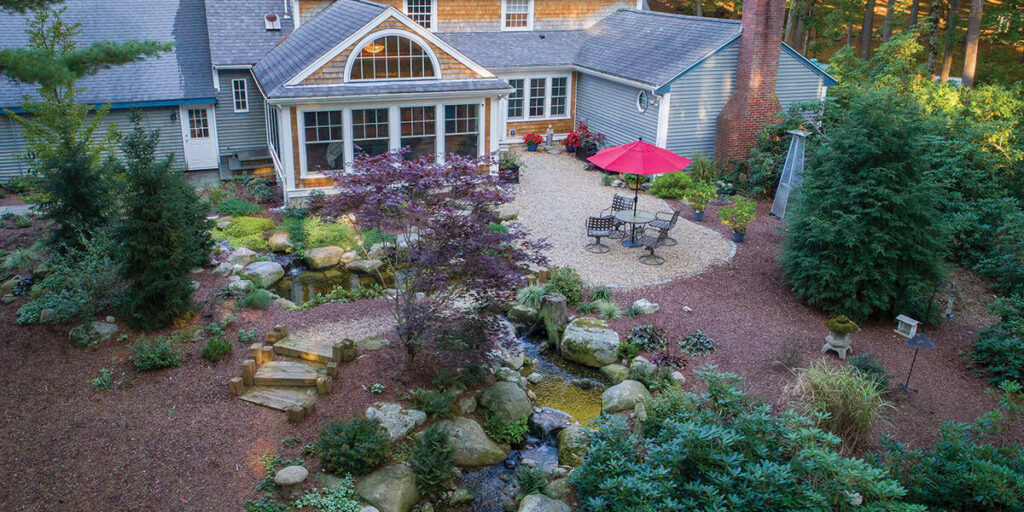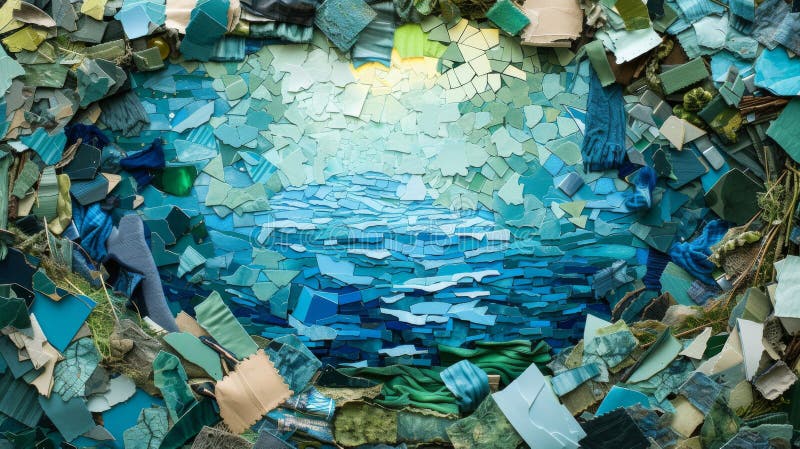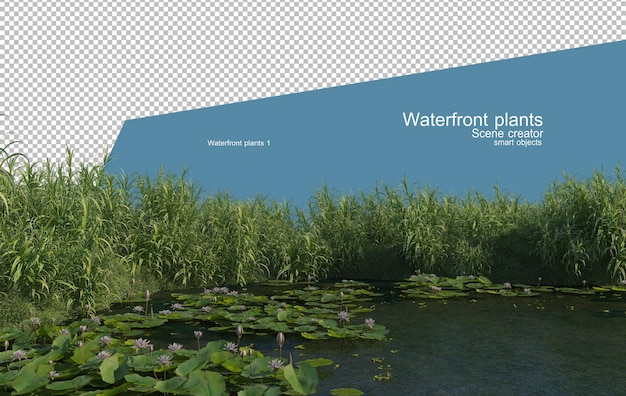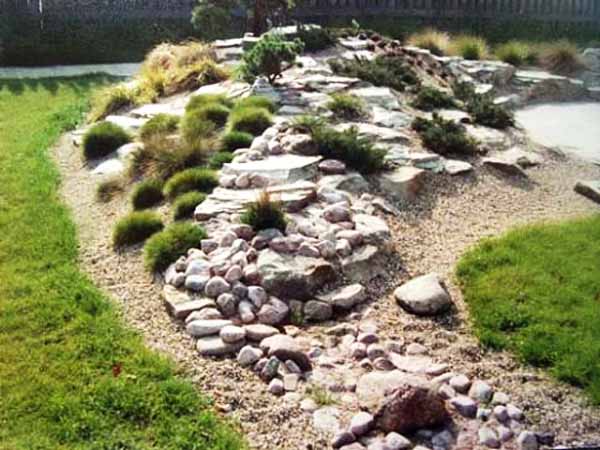
Water features have long been celebrated as captivating additions to gardens, patios, and even indoor spaces. The gentle sound of flowing water, the visual beauty of a well-designed fountain or pond, and the life it brings to a landscape are undeniable draws. However, with growing environmental awareness, the conventional methods of installing and maintaining these features are increasingly under scrutiny. This is where sustainable water feature installation comes into play, offering a beautiful and responsible way to enjoy the serenity of water while minimizing our impact on the planet. This comprehensive guide delves into the intricacies of creating stunning water features that are both aesthetically pleasing and environmentally sound, exploring everything from design considerations to material selection and ongoing maintenance.
Understanding the Importance of Sustainable Water Features
Before diving into the ‘how-to’, it’s crucial to understand the ‘why’. Traditional water features, beautiful as they may be, can often contribute to water waste, energy consumption, and the use of environmentally harmful materials. Sustainable water features, on the other hand, are designed with the environment in mind. They prioritize water conservation, energy efficiency, and the use of eco-friendly materials. Choosing a sustainable approach is not just a trend; it’s a responsibility. It’s about creating beauty without compromising the health of our planet for future generations.
The Environmental Impact of Traditional Water Features
Traditional water features can have several negative environmental consequences, including:
- Water Waste: Many traditional features are prone to leaks and evaporation, leading to significant water loss, especially in arid climates.
- High Energy Consumption: Pumps, filters, and lighting systems in traditional features can consume considerable amounts of electricity, contributing to carbon emissions.
- Use of Harmful Chemicals: Maintaining water clarity in traditional features often involves the use of chemicals like chlorine, which can harm aquatic life and potentially leach into the soil.
- Unsustainable Materials: Traditional water features may use materials like concrete and certain plastics, which have a high environmental footprint in their production and disposal.
Benefits of Sustainable Water Features
Embracing sustainability in water feature installation offers numerous benefits, including:
- Water Conservation: Sustainable features are designed to minimize water loss through efficient pumps, leak-proof systems, and water-wise design principles.
- Reduced Energy Consumption: Energy-efficient pumps, solar-powered options, and LED lighting can significantly reduce energy usage.
- Eco-Friendly Materials: Using recycled, reclaimed, or natural materials minimizes the environmental impact of construction.
- Enhanced Biodiversity: Sustainable features can create habitats for beneficial insects, birds, and other wildlife, promoting biodiversity.
- Cost Savings: Over time, sustainable features can save money on water bills, energy bills, and chemical treatments.
Planning and Design: The Foundation of Sustainability
The planning and design phase is critical for creating a truly sustainable water feature. Careful consideration of various factors during this stage can significantly impact the environmental footprint of your project. This involves understanding your site, selecting the right type of feature, and incorporating water-saving design principles.
Site Assessment and Considerations
Before you even begin to sketch your design, take a close look at your site. Consider the following:
- Sunlight: How much sunlight does the area receive? This will influence the type of plants you can use and whether you can utilize solar-powered pumps.
- Wind: Is the area exposed to strong winds? Wind can increase water evaporation, so consider windbreaks.
- Soil Type: The soil type will impact drainage and the types of plants that will thrive in and around your water feature.
- Existing Vegetation: Preserve existing trees and shrubs if possible, as they can provide shade and habitat for wildlife.
- Proximity to Utilities: Be aware of the location of underground utilities before digging.
- Water Source: Determine the best water source for your feature (e.g., rainwater harvesting, municipal water).
Choosing the Right Water Feature
The type of water feature you choose will also influence its sustainability. Some popular options include:
- Ponds: Ponds can provide habitats for wildlife and can be designed to be self-sustaining ecosystems.
- Fountains: Fountains can be visually stunning and can be designed with water-saving features like recirculating pumps.
- Waterfalls: Waterfalls add a dramatic element to a landscape and can be designed to mimic natural streams.
- Rain Gardens: Rain gardens are designed to collect and filter rainwater runoff, reducing erosion and providing a habitat for plants.
- Bog Gardens: These are a great option, using a shallow, water-retentive area to support specific plants.
Water-Saving Design Principles
Incorporate these principles into your design to maximize water conservation:
- Recirculating Systems: Use recirculating pumps to continuously circulate water, minimizing the need for fresh water.
- Leak-Proof Construction: Ensure all components are leak-proof to prevent water loss.
- Proper Sizing: Size your water feature appropriately for your available space and water source.
- Evaporation Reduction: Consider the shape and depth of the feature. Wider, shallower features lose water faster. Shade can also help.
- Plant Selection: Choose plants that are native to your area and well-suited to the local climate. They will require less water and provide habitat.
- Water Harvesting: Integrate rainwater harvesting systems to collect and store rainwater for topping off the feature.
Material Selection: Building with the Environment in Mind
The materials you choose for your water feature have a significant impact on its sustainability. Opting for eco-friendly materials minimizes the environmental footprint of construction and contributes to the longevity of your feature. Here are some sustainable material options:
Eco-Friendly Materials for Construction
- Recycled Materials: Utilize recycled materials such as recycled concrete, reclaimed wood, and recycled plastic lumber.
- Natural Stone: Natural stone is a durable and beautiful option, but ensure it is sourced responsibly.
- Reclaimed Materials: Use reclaimed materials like bricks, timbers, and other architectural elements to give your feature a unique and sustainable touch.
- Non-Toxic Sealants and Coatings: Choose sealants and coatings that are low in VOCs (Volatile Organic Compounds) and are safe for aquatic life.
- Clay and Earthen Materials: Clay, cob, and other earthen materials offer a low-impact, natural building alternative.
Choosing Sustainable Liners and Pumps
The liner and pump are essential components of any water feature. Opt for sustainable options to minimize environmental impact:
- Eco-Friendly Pond Liners: Look for pond liners made from recycled materials or those that are non-toxic and durable. Consider EPDM rubber liners, which are known for their longevity.
- Energy-Efficient Pumps: Choose pumps with high energy efficiency ratings to reduce energy consumption. Look for pumps with variable speed settings.
- Solar-Powered Pumps: Solar-powered pumps are a great way to reduce your reliance on the electrical grid and minimize your carbon footprint.
Installation Techniques for Sustainability
Proper installation techniques are crucial for ensuring the long-term sustainability of your water feature. This includes proper sealing, efficient plumbing, and the careful integration of the feature into its surroundings.
Sealing and Waterproofing
- Thorough Sealing: Ensure all joints, seams, and connections are thoroughly sealed to prevent leaks.
- Use of Eco-Friendly Sealants: Choose non-toxic sealants that are safe for aquatic life and the environment.
- Proper Drainage: Install proper drainage around the feature to prevent water from accumulating and causing damage.
Efficient Plumbing and Filtration
- Minimize Pipe Length: Reduce pipe length to minimize friction and energy loss.
- Use Efficient Plumbing Components: Choose high-quality pipes, fittings, and valves that are designed for efficiency.
- Effective Filtration: Install a filtration system that removes debris and pollutants, keeping the water clean and healthy. Consider using a biological filter to establish a healthy ecosystem.
Integrating the Feature into the Landscape
- Naturalistic Design: Design the feature to blend seamlessly with its surroundings, using natural materials and incorporating native plants.
- Wildlife Habitat: Create habitats for wildlife by incorporating features like shallow areas, submerged rocks, and native plants.
- Erosion Control: Implement erosion control measures to prevent soil erosion and protect the water feature from damage.
Maintenance and Upkeep: Ensuring Longevity and Sustainability
Regular maintenance is essential for ensuring the long-term sustainability and beauty of your water feature. This includes water quality monitoring, cleaning, and making necessary repairs. Proper maintenance not only extends the lifespan of your feature but also minimizes its environmental impact.
Water Quality Monitoring and Management
- Regular Testing: Test the water regularly for pH levels, alkalinity, and other parameters to ensure water quality.
- Natural Filtration: Utilize plants and beneficial bacteria to naturally filter the water.
- Minimize Chemical Use: Reduce or eliminate the use of harsh chemicals by using natural cleaning methods and filtration systems.
- Water Top-Off Practices: Use rainwater or a water-efficient method to top off the water level, and consider using a water meter to monitor water usage.
Cleaning and Debris Removal
- Regular Cleaning: Clean the feature regularly to remove debris, algae, and other pollutants.
- Manual Removal: Manually remove debris to avoid the use of chemicals.
- Mechanical Skimmers: Use mechanical skimmers to remove surface debris.
- Filter Maintenance: Clean and maintain the filtration system regularly to ensure its effectiveness.
Repairs and Upgrades
- Prompt Repairs: Address any leaks or damage promptly to prevent water loss and further damage.
- Upgrade to Energy-Efficient Components: Replace old pumps and lighting with energy-efficient models.
- Consider Eco-Friendly Replacements: When replacing components, choose eco-friendly options whenever possible.
Case Studies and Examples: Inspiration for Your Project
Seeing real-world examples can provide inspiration and guidance for your own sustainable water feature project. Here are a few examples of successful sustainable water feature installations:
The Eco-Friendly Pond
A homeowner in a drought-prone area created a stunning pond using a recycled EPDM liner, a solar-powered pump, and native plants. The pond is designed with shallow areas for wildlife and is naturally filtered by aquatic plants. The result is a thriving ecosystem that requires minimal maintenance and water.
The Rain Garden Waterfall
A landscape architect designed a waterfall feature that incorporates a rain garden. Rainwater is collected and channeled through the rain garden, which filters the water before it cascades down the waterfall and recirculates. The feature not only looks beautiful but also helps manage stormwater runoff and provides habitat for wildlife.
The Recycled Material Fountain
A community garden installed a fountain made from recycled concrete and reclaimed bricks. The fountain features a recirculating pump and is surrounded by drought-tolerant plants. The project demonstrates how sustainable water features can be both beautiful and affordable.
Conclusion: Embrace the Beauty of Sustainable Water Features
Installing a sustainable water feature is a rewarding experience that combines the beauty of nature with environmental responsibility. By carefully planning, selecting eco-friendly materials, and employing sustainable installation and maintenance practices, you can create a stunning water feature that enhances your landscape, conserves resources, and supports a healthy planet. Embrace the opportunity to create tranquility responsibly, and enjoy the serenity of your sustainable water feature for years to come. The choices you make today will have a lasting impact on the environment, so choose wisely, choose sustainably, and choose to enjoy the beauty of water in a way that honors nature.
Frequently Asked Questions (FAQ)
Here are some frequently asked questions about sustainable water feature installation:
- What are the main benefits of a sustainable water feature? The main benefits include water conservation, reduced energy consumption, use of eco-friendly materials, enhanced biodiversity, and cost savings.
- What types of materials are considered eco-friendly for water features? Recycled materials (concrete, wood), natural stone, reclaimed materials, non-toxic sealants, and clay-based products are considered eco-friendly.
- How can I conserve water in my water feature? Use recirculating pumps, leak-proof construction, proper sizing, evaporation reduction techniques, native plants, and rainwater harvesting.
- How do I choose an energy-efficient pump? Look for pumps with high energy efficiency ratings and variable speed settings.
- How often should I clean my water feature? Cleaning frequency depends on the feature, but regular cleaning is recommended to remove debris, algae, and pollutants.
- Can I build a water feature myself? Yes, but it’s important to research and plan carefully. Consider hiring a professional for complex projects or if you lack experience.
- Where can I find eco-friendly materials? Check with local building supply stores, landscaping suppliers, and online retailers that specialize in sustainable products.
- How much does a sustainable water feature cost? Costs vary depending on the size, design, and materials used. However, sustainable options can often be cost-effective in the long run due to reduced water and energy bills.
- How can I attract wildlife to my water feature? Incorporate shallow areas, submerged rocks, and native plants to create a habitat for birds, insects, and other wildlife.
- What are some common mistakes to avoid when installing a water feature? Avoid using non-waterproof materials, improper sealing, and neglecting proper drainage.


